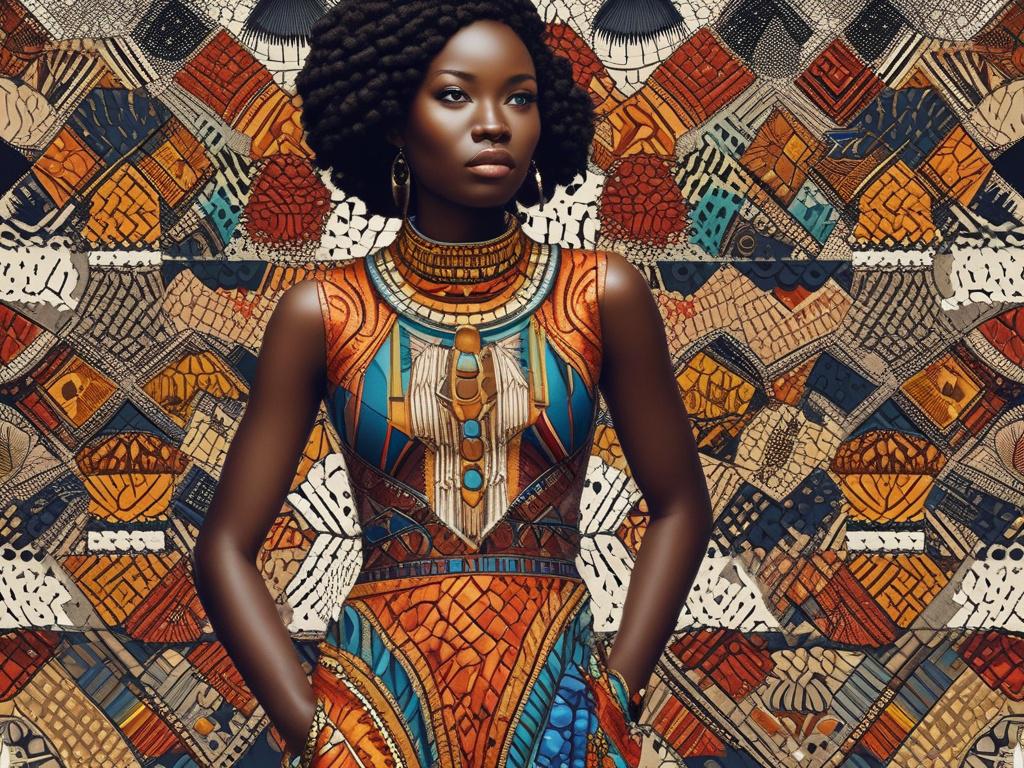Step into the vibrant world of African fabrics, where colors, patterns, and textures come together to create a stunning tapestry of cultural expression. From the striking prints of Ankara to the sophisticated elegance of Kente, these unique textiles tell stories of heritage, identity, and community. As you explore the beauty and diversity of African fabrics, you'll find that they transcend mere aesthetics, weaving rich narratives that resonate with both tradition and innovation.
In today's fashion landscape, the influence of African textiles continues to grow, captivating designers and consumers alike. As contemporary fashion embraces inclusivity and diversity, African fabrics are at the forefront, inspiring new trends and redefining the boundaries of style. This blog post delves into the cultural significance of these textiles and examines how they are shaping the modern fashion scene, encouraging us all to celebrate their artistry and impact.
Discover the beauty and diversity of African fabrics
African fabrics captivate the senses with their vivid colors, intricate patterns, and rich textures. From the bold geometric designs of Kente cloth in Ghana to the delicate batik prints of West Africa, each fabric tells a unique story that reflects the culture and traditions of the people who create them. Artisans use ancient dyeing techniques and weaving methods that have been passed down through generations, making each piece not only a textile but a piece of history. When you explore the vibrant world of African fabrics, you encounter a kaleidoscope of creativity and craftsmanship that truly stands out in the realm of textiles.
The diversity of African fabrics extends far beyond a single style or technique. Each region boasts its own distinct materials and artistry, contributing to a rich tapestry of design. For instance, East Africa's shuka, a brightly colored checked cloth worn by the Maasai, contrasts with the elegant indigo dyed fabric of West African cultures. As fashion enthusiasts and designers increasingly recognize the value of these textiles, they also embrace the stories and meanings behind them. The beauty and diversity of African fabrics not only enrich contemporary fashion but also serve as a bridge between past traditions and modern interpretations.
The cultural significance of African textiles in modern design
African textiles, rich with history and symbolism, play a crucial role in the contemporary design landscape. Designers increasingly draw inspiration from the intricate patterns and vibrant colors that define these fabrics. Each textile tells a story, reflecting the cultural heritage of various communities across the continent. By incorporating these traditional designs into modern garments, contemporary designers honor their origins while also infusing fresh perspectives into their creations. This blending of old and new allows a dialogue between cultures, fostering appreciation for the artistry behind African textiles.
Moreover, the use of African fabrics in modern fashion highlights a growing trend towards sustainability and ethical sourcing. Many designers prioritize collaborating with local artisans, ensuring that the craftsmanship and techniques associated with these textiles are passed down through generations. This approach not only supports local economies but also promotes an understanding of the environmental impact of fast fashion. As consumers increasingly seek out unique, ethically produced clothing, African fabrics take center stage as a symbol of both identity and responsibility in the fashion world.
How African fabrics are shaping contemporary fashion trends
African fabrics, known for their bold patterns and rich colors, are making significant waves in the global fashion scene. Designers increasingly incorporate these vibrant textiles into their collections, blending traditional techniques with modern aesthetics. Brands like PUMA and Gucci have tapped into African designs, introducing styles that celebrate both cultural heritage and contemporary fashion. The unique characteristics of African fabrics, such as Ankara and Kente, inspire creativity and innovation, allowing designers to craft garments that are both visually striking and culturally resonant.
Moreover, African fabrics foster a sense of authenticity and storytelling in contemporary fashion. Fashion designers draw from the rich histories and meanings embedded in these textiles, creating pieces that convey deeper messages. By showcasing African fabrics in runway shows and retail spaces, the fashion industry honors the artistry of African craftsmanship while promoting sustainability and ethical practices. As a result, wearing African prints becomes a statement of appreciation for cultural diversity and an affirmation of individuality. This fusion of tradition and modernity not only revitalizes the fashion landscape but also empowers African artisans, elevating their work on a global stage.
